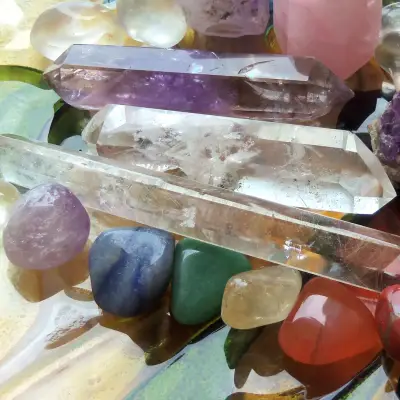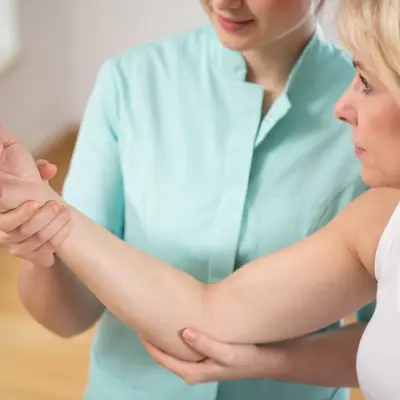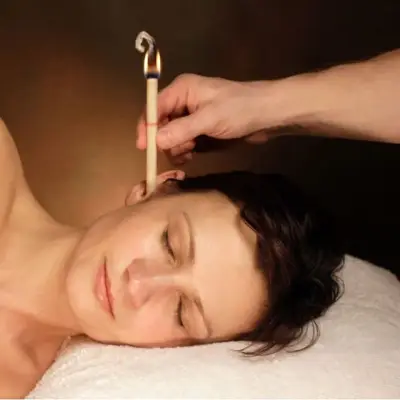If you're reading this, chances are you've felt the powerful pull of connection—of wanting to hold space for women to come together, share openly, and feel seen and supported. You might have experienced the magic of a women's circle firsthand, or maybe you're just beginning to explore what a woman's circle is.
Either way, becoming a women's circle facilitator can be a deeply fulfilling path. It’s a role that blends leadership with compassion, organisation with intuition, and purpose with presence.
Whether you're curious about starting your own circle, wondering what qualifications are needed, or trying to understand what really happens in these gatherings, this guide will walk you through everything you need to know.
Jump to:
- What is a Women’s Circle?
- What is the Purpose of a Women’s Circle?
- What Happens at a Women’s Circle?
- How Long Does a Women’s Circle Last?
- What is the Role of the Facilitator in the Circle?
- What Qualifications Do You Need to Be a Facilitator?
- How to Hold a Women's Circle
- How Do You Confidently Facilitate a Women’s Circle?
- Things to Talk About in a Women’s Circle
- What is a Facilitator’s Salary?
- Study Our Women’s Circle Facilitator Diploma Course for £29
Recommended for you!
Best SellersWhat is a Women’s Circle?
A women’s circle—also sometimes called a sisterhood circle—is a safe, sacred space where women gather to connect, reflect, and grow. These gatherings can be focused on a specific theme, such as self-love, empowerment, or seasonal celebrations, or they might simply be a time to pause and share from the heart.
The definition of a women's circle is simple: it’s a space for women to sit in equality, without hierarchy, where every voice matters. Circles can include rituals, journaling, guided meditation, storytelling, and group sharing, all held within an atmosphere of confidentiality and respect.
What is the Purpose of a Women’s Circle?
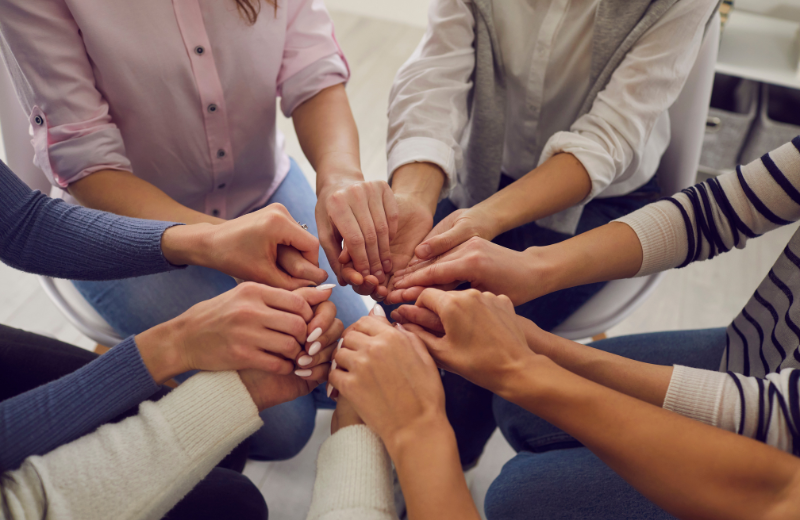
The purpose of a women's circle is to create connection. It’s a space to be truly seen, without judgement, comparison or pressure. It offers:
- Emotional support.
- Shared wisdom.
- Spiritual nourishment.
- A break from everyday roles and responsibilities.
In a world that often pits women against each other, women’s circles offer a reminder that community, collaboration, and care are not only possible—they are powerful.
What Happens at a Women’s Circle?
Each circle is unique, but there are common threads. A typical gathering might include:
- A grounding meditation or breathwork to arrive in the space.
- Sharing intentions or reflections.
- Group discussion or storytelling on a chosen theme.
- A creative or healing activity like journaling, chanting, or movement.
- Closing with gratitude or a simple ritual.
Some circles might celebrate specific events, such as full moons or solstices. Others might focus on emotional support, empowerment, or simply being present together. The power of the women's circle lies in its ability to promote deep connection, healing, and community.
How Long Does a Women’s Circle Last?
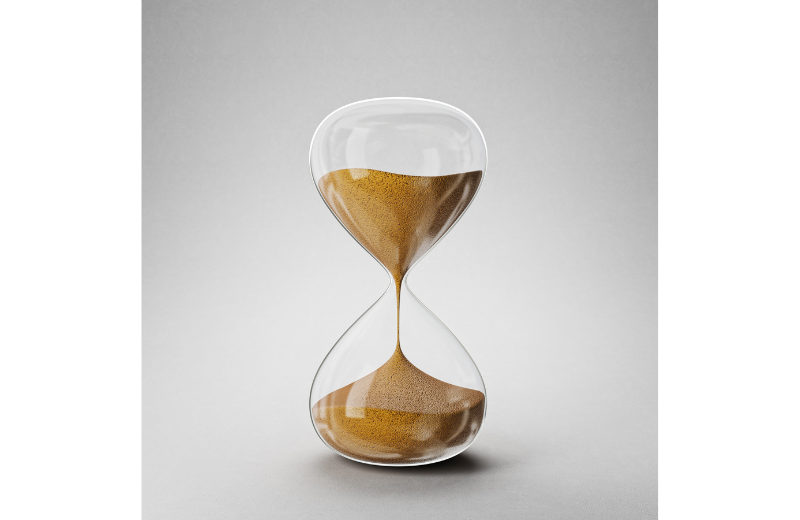
A women’s circle typically lasts between 1.5 to 2 hours, though the exact length can vary depending on the theme, structure, and number of participants.
Some circles may be shorter and more casual, lasting around an hour, while others—particularly those involving rituals, ceremonies, or workshops—may extend to three hours or more.
It's important to allow enough time for grounding, sharing, and closing without rushing. If you’re facilitating, aim to balance structure with flow, so the experience feels complete but not overwhelming. Let your group’s needs guide the timing.
What is the Role of the Facilitator in the Circle?
As a women’s circle facilitator, your role is to create and maintain a safe, inclusive space. You're not there to lead in a traditional sense, but rather to guide the flow of the gathering with sensitivity and care. The duties of a facilitator include:
- Planning and structuring the session.
- Setting up the physical or virtual space.
- Holding boundaries and confidentiality.
- Encouraging participation without pressure.
- Responding gently to emotional moments.
You are the anchor of the space, allowing the women in the circle to feel supported and heard.
What Qualifications Do You Need to Be a Facilitator?

There are no legal qualifications required to hold a women’s circle, but having training or guidance can make a world of difference. An online course like our Women's Circle Facilitator Diploma Course is a great place to start; it equips you with the tools, confidence and knowledge to hold space safely and meaningfully.
Experience in mindfulness, meditation, coaching, and energy work can also be helpful, but it's your heart, integrity and presence that matters most.
How to Hold a Women’s Circle
Hosting a women's circle starts with intention. Consider these key steps:
- Decide on the purpose or theme – This could be based on a season, a topic like self-worth, or simply an open circle for sharing
- Choose the setting – This might be a cosy living room, a yoga studio, a garden, or online via Zoom
- Create the container – Set the tone by opening with a grounding ritual such as breathwork, candle lighting or a short meditation
- Guide the flow – Use prompts or questions to spark sharing, but allow space for natural conversation
- Close intentionally – End with a ritual or reflection, such as group gratitude or a song
How Do You Confidently Facilitate a Women’s Circle?

Facilitation means guiding without dominating. To facilitate a women's circle well, you'll need to practise listening, presence and flexibility. A few helpful tips include:
- Prepare, but don’t over-script.
- Stay grounded, especially if emotions rise.
- Use a talking piece to help structure the flow.
- Be transparent about the circle's boundaries and expectations.
- Offer prompts like “What’s been on your heart lately?” or “What are you releasing?”.
Over time, you’ll develop your own rhythm and style. Whether you’re hosting a women’s circle in person or leading virtual circles for a global community, consistency and care go a long way.
Things to Talk About in a Women’s Circle
Topics for women's circles can be wide-ranging and should resonate with the group’s needs. Some examples include:
- Self-love and body image.
- Inner child healing.
- Goddess energy and divine feminine wisdom.
- Navigating transitions like menopause or motherhood.
- Grief, joy, relationships, and personal power.
You can also work with lunar cycles, seasonal energies, or archetypes.
Recommended for you!
Best SellersWhat is a Facilitator’s Salary?
Facilitator salaries can vary widely depending on how often you run circles and whether you're offering them as part of a wider practice. Some people run donation-based or free gatherings, especially when starting out. Others charge between £10–£30 per person per session, or offer packages and retreat days.
You might also integrate circles into a coaching, wellness, or spiritual practice. While not a conventional salary, running women's circles can become a deeply rewarding part of your professional life, both emotionally and financially.
Study Our Women’s Circle Facilitator Diploma Course for £29
Facilitating a women’s circle is about far more than lighting a few candles and passing around a talking stick. It’s a sacred and intentional act that can ripple out into families, communities and beyond. If you’ve been feeling the call to step into this role, know that you don’t have to figure it out alone.
The Women's Circle Facilitator Diploma Course from Centre of Excellence is a brilliant way to begin. Designed for both beginners and those already working in the wellness field, it covers everything from holding space and creating structure, to understanding feminine energy and developing your own unique facilitation style.
And the best part? You can get the full course for just £29. Follow the link below to learn more and start your journey towards holding empowering, healing circles for women.

